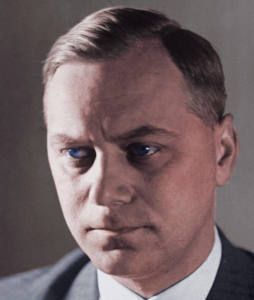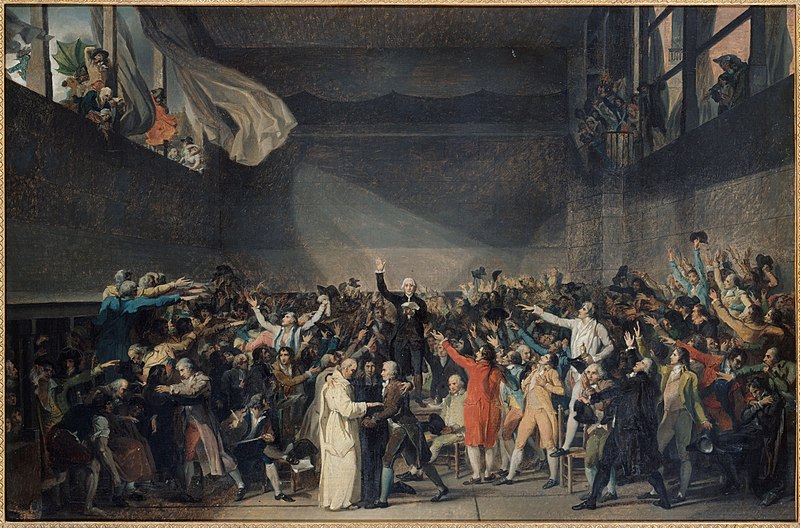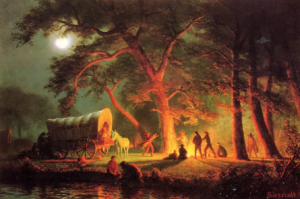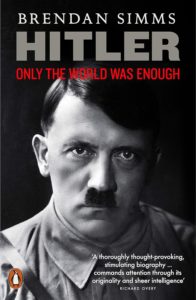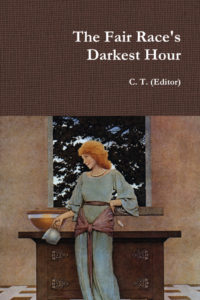Editor’s note: A correspondent sent me these translations of Hans F. K. Günther’s Der Nordische Gedanke unter den Deutschen with a note: ‘This will put white nationalists in their place and perhaps grant more moral and social legitimacy to the Nordic movement’. Those who want to delve deeper into the matter can use Google translator to read this article that Eduardo Velasco wrote on his webzine Evropa Soberana.
______ 卐 ______
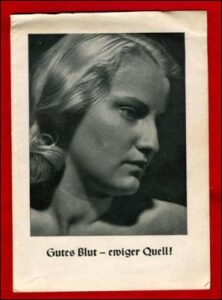 Complaints against the Nordic idea
Complaints against the Nordic idea
The Nordic idea is a consequence of the recognition of the importance of the Nordic race for the life of the Germanic-speaking peoples and therefore presents the image of the healthy Nordic person as the model for the selection of the German people. The Nordic idea thus aims at the birth victory of the Nordic person within all German tribes: at the higher number of children that can be achieved by the predominantly Nordic people of all German tribes after appropriate choice of spouse…
The opponents of the racial idea are now less concerned about the alleged incitement of people than about the ‘destroying intention’ of the racial idea. One would like to accuse the Nordic idea of causing a rift in the German people: on this side the Nordics, on the other the non-Nordics.
This accusation cannot apply to the Nordic idea, simply because the reality is quite different: the racial rift does not run through the German people but through almost every single German. It is a rift that brings every single German the unease of having to decide: for or against the select model of the Nordic people. By pointing to a rift in the German people that must separate Nordic Germans from non-Nordic Germans, the opponents of the Nordic idea were unable to arouse any effective resistance to the emphasis on the importance of the Nordic race, because just as the number of purely Nordic people in Germany is relatively small, the number of people without a Nordic influence is also relatively small. Moreover, it would not be possible to ‘organize’ a unity of all non-Nordic Germans because these non-Nordic people would have to be gathered from the most hostile circles and camps of the German religious denominations, classes, parties and tribes: an impossible undertaking…
It is difficult to understand how the Nordic idea can have a ‘completely disruptive’ effect if it praises the importance of a race that has proven itself to be the creative one among all German tribes. The Nordic-minded Germans will not be able to become ‘destroyers of the people’, as they have been accused because they emphasize the unity of the German tribes through the common Nordic blood, the creative blood in the German national body. They will not divide the German people as the political parties do, which emphasize class differences – the high number of children of a found Nordic working-class couple will be more important to them than the high number of children of a non-Nordic noble or rich person.
The Nordic movement will not divide the German people as the religious denominations do, which erect barriers between Germans and Germans that go beyond their matters. The Nordic movement does not want to achieve its goal through the means used by churches or parties, but through the higher birth rates of the predominantly Nordic Germans—a means that will not harm any of our fellow countrymen in any way. Just as the non-Nordic Germans are not blamed for having a higher number of descendants than the predominantly Nordic ones, we German Protestants do not blame the German Catholics for having a higher number of children (birth rate in Prussia per marriage in 1912: 47 for Catholics, 2.9 for Protestants)—neither can the predominantly Nordic people be blamed for having a higher number of children.
The ‘butterfly victory’ of the Catholic Church will serve as an example for the Nordic movement. All the arguments against the Nordic idea reveal again and again that the fact that this idea is new has a downright confusing effect on most observers. It is confirmed once again: most people who consider a new idea try to fit it into the traditional set of ideas of the time. But here we must once again demand that the idea of a re-Nordization can hardly be fitted into any one place; from its perspective, it will have to demand a completely new order, a thorough relearning…
While the theory of hereditary health (racial hygiene) shows the means to increase the higher-value genetic makeup in general and thus aims to benefit all peoples and all races represented in the nations, the Nordic idea is primarily aimed at increasing the higher-value genetic makeup of a race represented in the German people, in fact in all its tribes: the Nordic. It therefore wants to first stop the ongoing counter-selection of the Nordic blood component of all German tribes and then help this Nordic component to have higher numbers of children…
The promotion of the reproduction of hereditarily capable people regardless of racial affiliation will not meet with resistance in the long run. But the special promotion of the reproduction of hereditarily capable people of a certain race—this goal, which is precisely what makes the Nordic movement unique—will still bring this movement a lot of opposition… The promotion of the Nordic race, so that it achieves not only the same but higher numbers of children than the other races, will only ever be taken up as a task by a fraction of the people. But a fraction is enough to fulfil the task. If only he achieves the higher number of children from his circles, this fraction will always be proportionally satisfied. That is the nature of the birth rate.
Once that has been achieved, the Nordic movement has the task of monitoring the selection and number of children in its circles, supporting economically weakened, capable clans so that they can have a large number of children, etc.
Ultimately, the Nordic idea seeks to convince people through the fact of its existence and through the way of life of its adherents…
The knowledge of the value of the Nordic race for the German people will never be directed against an individual, but it will have to clearly distinguish between desirable and less desirable childbearing—this distinction seems indispensable. Everything must be done to increase the birth rate of Nordic and more Nordic people in Germany.

